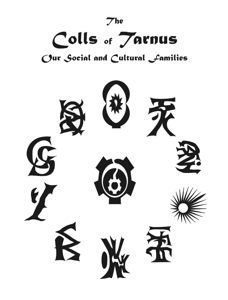
What is a Coll?
The word ‘coll' is a universally-accepted everyday term, dating back to the Colonists themselves, for the social collective. The coll is the primary familial social unit in the world of Tarnus. For two people to be in the same coll means that they share a line of descent, matrilineal for women, patrilineal for men. Naming practices reflect this usage.
There is no close parallel to the coll in the world of Ancient Earth, so Archive readers using that frame must be content with visualizing a clan that functions as a global political party, up to and including its own system of governance overlaid across the standard civil governments of any secular world. To confound matters further, the belief systems of different colls amount to historically-prolonged sectarian divisions of a single religion, and very few discussions on matters of faith take place across coll lines.
The plural of ‘coll' is ‘colls'. The adjectival form (corresponding to ‘tribal’) is ‘collechi', as in ‘the collechi marking on her arm’. As of the end of the Insurrection of 1563 4D, twelve colls are known to exist. The Archives mention five others that died out or vanished in wars or plagues during the ten thousand years of continuous human life on Tarnus.
The Names of the Colls
Here is a list of the coll names of Tarnus. They vary widely in form and pronunciation, and no one has been able to trace all of these names back to the roster of the six hundred Colonists who emerged from the wrecked lander during the short summer of the northern mountains at the beginning of Tarnus history.
COLL NAMES
| Coll Name |
| Arcus |
| Argazindar |
| Astran Terxil |
| Darko Hejj |
| Gellin Sintherou |
| Fandarinn |
| Incarnastar |
| Kai Ren Hau |
| Novander Wye |
| Original |
| Sinantro |
| Survivor |
Languages
Each coll has its own languages and dialects, but nearly everyone on Tarnus uses a common language comfortably. The shared language of Tarnus is formally called ComLang, more usually ‘Clang’ in vernacular. It is a long-evolved descendant of Share, which dominated the speech of the peoples of Earth at the time of the emigration of the Colonists to Tarnus. Share itself was a practical blend of a startling variety of Earth languages, including, among others, Arabic, English, Tagalog, French, Navajo, Zulu, and Sinese.
The evolution of Clang was deeply shaped by the founding, development and interactions of the colls, the social familial structures that underlie all of the culture of Tarnus. All of the Colonists spoke Share fluently, but they also brought the influences of other languages as well: Sinese, Anglo, Russ, and many others. When the colls first formed their own separate communities in different areas of Tarnus, linguistic differentiation began, amplified by the personal preferences of the coll founders, and accelerated as coll members sought to distinguish their communities from the others. The Kai Ren Hau, for example, have tenaciously retained their close connection with the ancient Sinese language of their Colonist founders, even to the extent of evolving a wide range of powerful, beautiful and complex ideographic written forms.
Each coll has its own unique dialect range of terms, usages and sounds, but the most marked aspect of coll language differences lies in the written forms, especially in the skin inscriptions in lapscript, ideoscript, or other aesthetically-pleasing forms. These attain the level of art and poetry, and their makers ascribe spiritual powers to them.
Descriptions of Colls
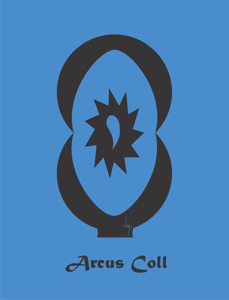
The Arcus are the only ones who retain a kind of cross-family clan structure akin to the ancient system of the Iroquois Confederacy of ancient Earth. Marriages must align among clans, and those within the same clan cannot marry.
Arcus Coll‘s power is written all across the history of Tarnus. It ruled during the First and Third Dynasties, and it ruled well, succumbing only to the inevitable decay brought on by continued and spreading human weakness and indifference to proper principles of society.
The Arcus Coll is deeply rooted in the smaller cities of Tarnus, particularly in Monford, where Ezzar was born. Although it is one of the stronger colls militarily, it places its greatest energy in the education and development of its children, making it potent in governmental affairs in Monford and elsewhere. In Gran Dar, the great City, the government has tried to relocate many Arcus members out, as an attempt to diminish their influence there.
The knifescript of the Arcus is renowned for its beauty and expressiveness.
Ezzar and her mother’s female line are from the Harridium clan of the Arcus Coll. Raffina is Arcus also, in the Yaviures clan, noted for its strong women. Grendel was adopted into the Arcus Coll posthumously, into the clan of Ezzar‘s father.
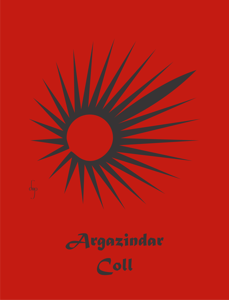
Bargaroth and his team are all Argazindari, as were the two men who accosted Marrra and Deen at the inn. The Argaz Coll is the most-feared and most-hated of all, because of its unblinking dedication to military and martial-arts supremacy at the expense of almost all other qualities, but even more so because of their ruinous rule during the Second Dynasty.
Arlen favored the Argazindari, of course, as his special forces. The Argazindari use a form of scarification of the skin of the neck, twisted around the neck like snakes, to mark themselves clearly. Bargaroth is Argaz.
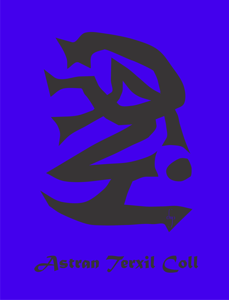
The Astrans are the most wealthy of the colls, having most of the members among the high ranks of the corps and the governments of the cities. They tend to view the other colls as beneath their attention, and in general are utterly against any intermarriage with members of other colls. Lusin and Mentrius are also Astran Terxil, of the Adrili family. As with all colls, women inherit family names from their mothers, men from their fathers.
Leil is Astran Terxil, of the Hartrei family.
Astranar lapscript is a gloriously-lovely form of writing that interweaves the strokes of letters to create an impression of organic growth like vines of meaning. Astran Terxil colors are brown and blue, of certain hues defined by the coll leadership.
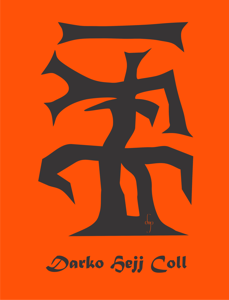
The Hejji constitute the lowest-ranked members of human society on Tarnus, and are generally looked down on by others, no matter what their achievements, individual reputations, and personal attributes. This attitude stems from a series of betrayals of coll principle that took place during the Second Dynasty, when a few members of Darko Hejj Coll, pressured by authorities, surrendered the names of about fifty members of a resistance network responsible for the destruction of an Argaz military training camp. Among those named were members of Astran Terxil, Gellin Sintherou, Fandarinn, and Sinantro Colls. All those named were tortured and executed by the Argazindari.
The colls of the victims never forgave this betrayal. One result of this sequence of events was the ostracizing of Darko Hejj by the other colls, a separation that lasted several hundred years. The boycott was ended only when the Fandarinn negotiated the payment of reparations from the Hejji to the other colls. Even afterwards, the betrayal left scars that never healed fully.
The Darko Hejj colors are orange and black. Andrew, his father’s line, and Engel are Darko Hejj, the Luce family, but Andrew‘s mother is Sinantro, a rare union of colls in marriage. Nexi, Alliji, and Nurumin are all Hejji too.
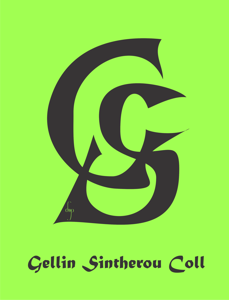
The Gellin Sintherou Coll is the most powerful among the three outland colls – those with the strongest ties in surface communities. Most surface towns, villages, and farm groups rely heavily on Gellin Sintherou supply and distribution systems to provide necessary agricultural and ecological tools and materials. This reliance dates all the way back to the end of the First Dynasty, at which time the regional governments mandated and funded development of the railroads and road systems that have spanned Muathen ever since.
Gellin Sintherou engineers and architects created the Soft Tread process for mapping, designing, building, and maintaining surface transportation systems with the least impact to the delicate ecosystems of Tarnus. It was a Gellin Sintherou scientist who discovered the communications properties of the longrunner vines, and subsequently constructed a network for the transmission of information using the vines’ unusual optical behavior.
Gellin Sintherou engineers and architects created the Soft Tread process for mapping, designing, building, and maintaining surface transportation systems with the least impact to the delicate ecosystems of Tarnus. It was a Gellin Sintherou scientist who discovered the communications properties of the longrunner vines, and subsequently constructed a network for the transmission of information using the vines’ unusual optical behavior.
Ellichik, Jirinai, and Nazrelo are Gellin Sintherou.
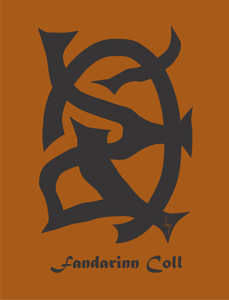
The Fandarinn Coll has a historical and deep-rooted reputation among the other colls as a mystical, manipulative, magical organization often blamed, and praised, for significant shifts in the stream of human existence on Tarnus. “Weirds and weirlocks" is a phrase one often hears when the Fandarinns are discussed. Fandarinn Coll is credited with rescuing humanity from the sodden, despair-ridden aftermath of the Inside-Out Plague of 8556 AC, and initiating the negotiations that finally produced the Gene Laws now in place.
Fandarinn Coll is also blamed, without basis, for a wide range of misfortunes that have occurred from time to time, from crop failures to underground cave-ins.
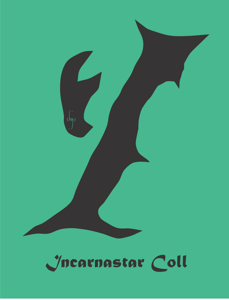
Incarnastar Coll began its existence in a breakaway from Arcus Coll during the Second Dynasty, making it the youngest of the colls. The split took place during a debate over threats issued by the Argazindari against a surface community that had resisted turning over three accused assassins. A small group of Arcus Coll members took the accused community members on a long flight down one of the rivers leading through the Great South Fall, into the trackless and unmapped forests of Sirathen. They were not seen again until after the Genedriver Plague two hundred years later, when several hundred people emerged from a long-abandoned wilderness south of Purusil and identified themselves as Incarnastar. The new coll quickly gained a reputation among the others for the adventuresome attitudes of its members.
Sinantro and Incarnastar colls are the most sympathetic to andros. Nargolin, Marande, and Rion are Incarnastar.
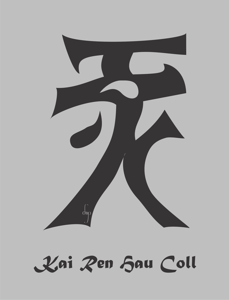
This coll stands head and shoulders above most of the others, even Arcus, Astran Terxil, and Fandarinn, in its reputation for honor, trust, and level of civilization. It is the first of the colls to organize after the Colonization, the first of the colls to establish and perpetuate a university, the first of the colls to research the Archives thoroughly enough to produce a history of human existence leading up to the colonization of Tarnus, and the first of the colls to set forth the unifying principles that welded all the colls into one community that has survived even the most destructive and determined efforts to shatter human well-being, including the calamitous reign of the Argazindari during the Second Dynasty. Its name originates in a Sinese phrase now forgotten, and is often abbreviated to ‘Hau', an appropriate epithet for describing its lasting influence and value.
Hings-Wen is Kai Ren Hau. So are Deng Bai-Xin, Tomas ShanXi, and Nadienne Trandi.
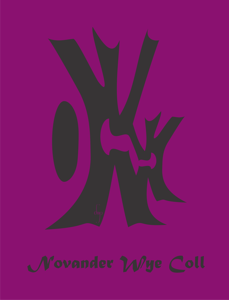
Novander Wye Coll possesses a most intriguing history. When the Colonists landed on Tarnus, some of them carried genes that set them apart by the pale color of their skins. Initially, these individuals, fewer than a hundred in number, lived among all the others as colls began sorting themselves out by linguistic tradition, skills, preoccupations, compatibilities, and cultural conections. After a few generations, the forerunners of Novander Wye Coll found themselves in a more-concentrated group apart as a result of choices made by others to join the nascent colls and form major social units of common interest. Somehow the remaining individuals, who had not chosen to join any coll at all, found themselves without leadership or structure, and at last, in the fourth century after Colonization (400-plus AC), these people met and decided to constitute the Novander Wye Coll, although by a different name at the time.
The distinction of skin color did not continue. Intermarriage among colls was commonplace, and within a few more generations the Novander Wye had come to resemble all the other peoples of Tarnus in their variety of skin appearance.
The Novander Wye moved freely between surface and City life, but developed strong ties to the land and its cultivation and care. Their agricultural and ecological engineering skills grew so advanced that the Regional governments used their expertise in consultation to develop policies and procedures for balancing City and surface population. Not surprisingly, the other colls found this level of influence galling, and tried repeatedly to take equivalent roles in the governance of the surface, but their attempts usually ended in embarrassing failures that only validated the Novander Wye as the experts in natural resource management.
The Novander Wye rank only behind the Gellin Sintherou Coll in importance among the outlanders, or surface-dwellers. Cortevail is Novander Wye, adopted in 1563 4D, and Linderus, Marande, Torre, and Warren are also Novander Wye.
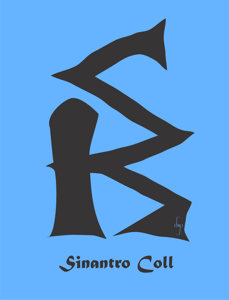
Of all the colls, Sinantro Coll is both the smallest and the most secretive, even more furtive than the Argazindari. Yet Sinantro Coll members are among the hardest-working and most trustworthy of all, and represent a deeply-committed and most industrious minority of the outland peoples. Many of them may be found in career military positions, where they can influence the decision-making process in matters of security and stability, especially in surface politics.
Sinantro colors are silver-gray and dark green. Tannerye is Sinantro, as was Asara, Andrew‘s mother.
Survivor
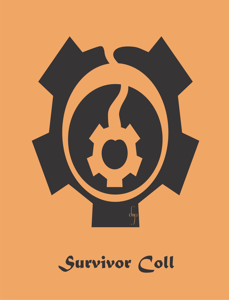
This coll was created in 1563 4D as a result of the final merging of human and andro gene pools into a single community. It represents the community formed by the few andros who fought in the Insurrection and those who supported those who fought.
Jeddin founded the Survivor Coll, and Lejina, Cortevail, and numerous other andros became members, even though some had already been adopted into established colls.
Original
The Originals are little known among other colls, since there are none of the members of the Originals on Muathen. This coll is founded on the belief that there was never a Colonization of Tarnus, and that humankind evolved originally on the planet out of indigenous life forms. The Originals control an overseas region of Tarnus, where their society has grown up independently of the dynastic successions of Muathen and its immediately-neighboring continents and islands. Occasionally a delegation or group of its members visit one of the regional governments, most usually the Fourth Region, to exchange information and goods or to arrange for such trade.
Insurrection Colls
The four colls most prominent in the Insurrection of 1563 4D are: Arcus, Incarnastar, Gellin Sintherou, and Novander Wye. Members of other colls, including especially Sinantro, Darko Hejj and Kai Ren Hau, participated as well, but the four named first operated the command structure that enabled the concerted actions of the group.